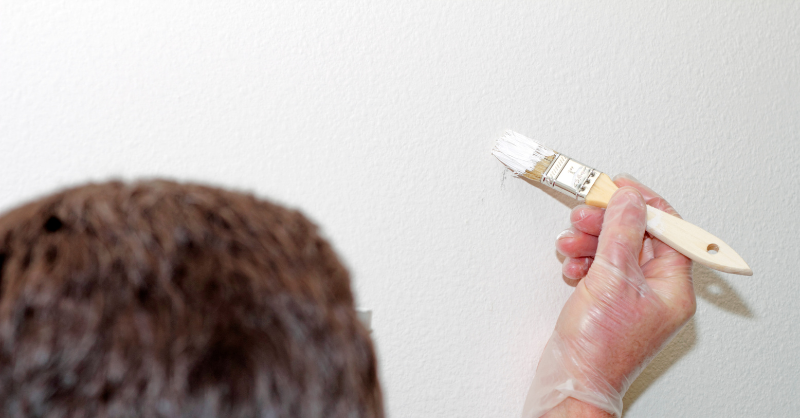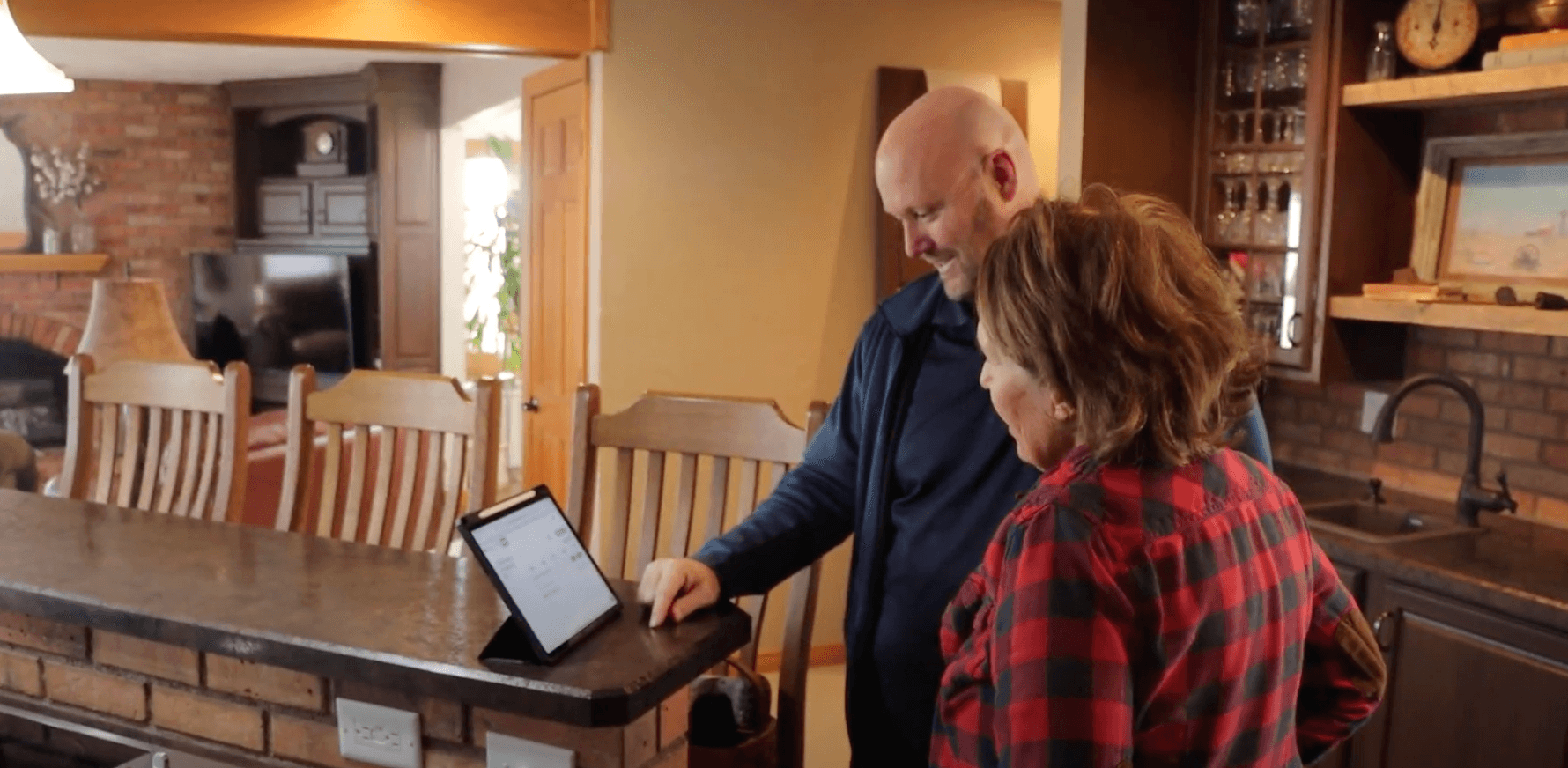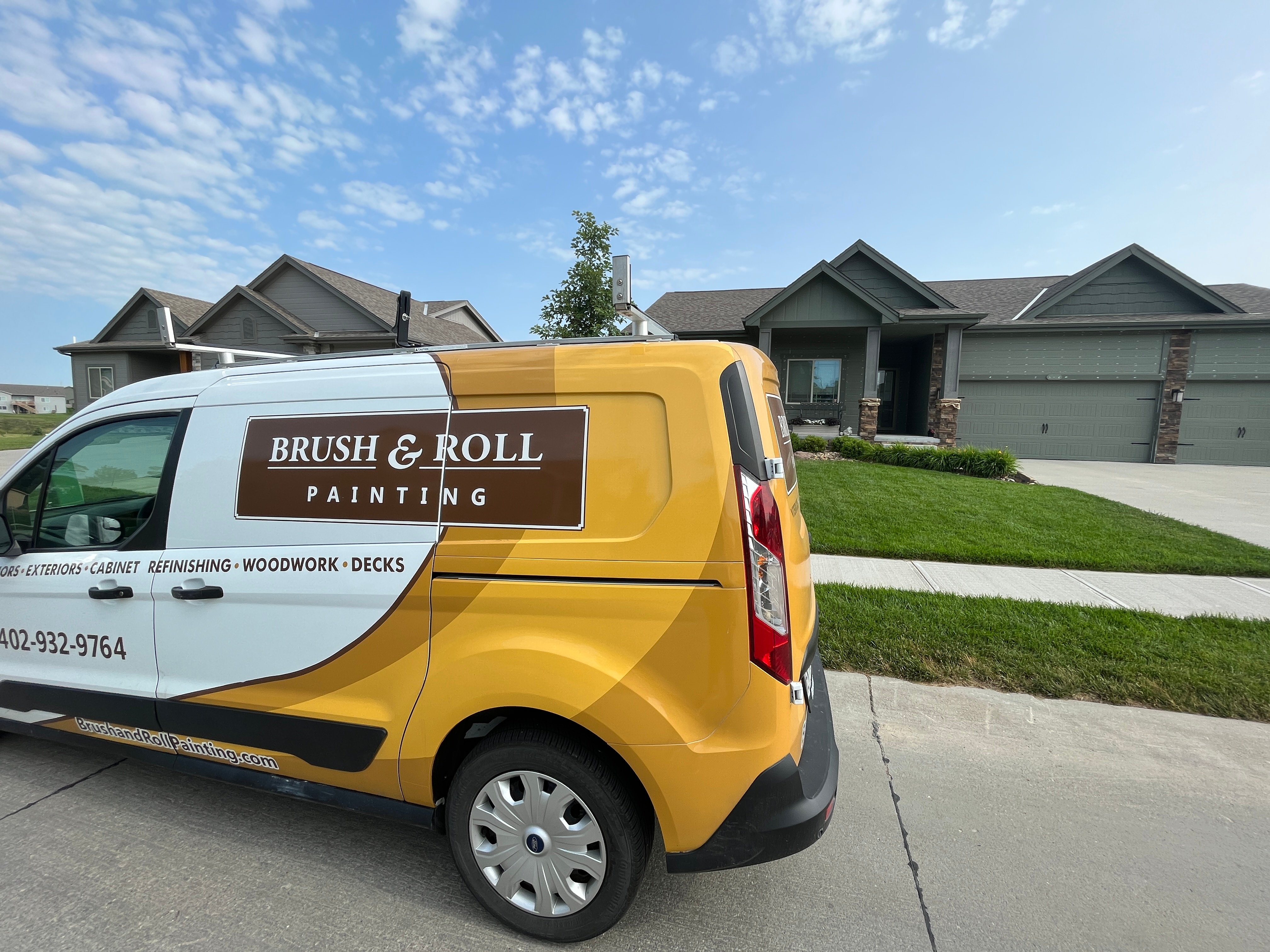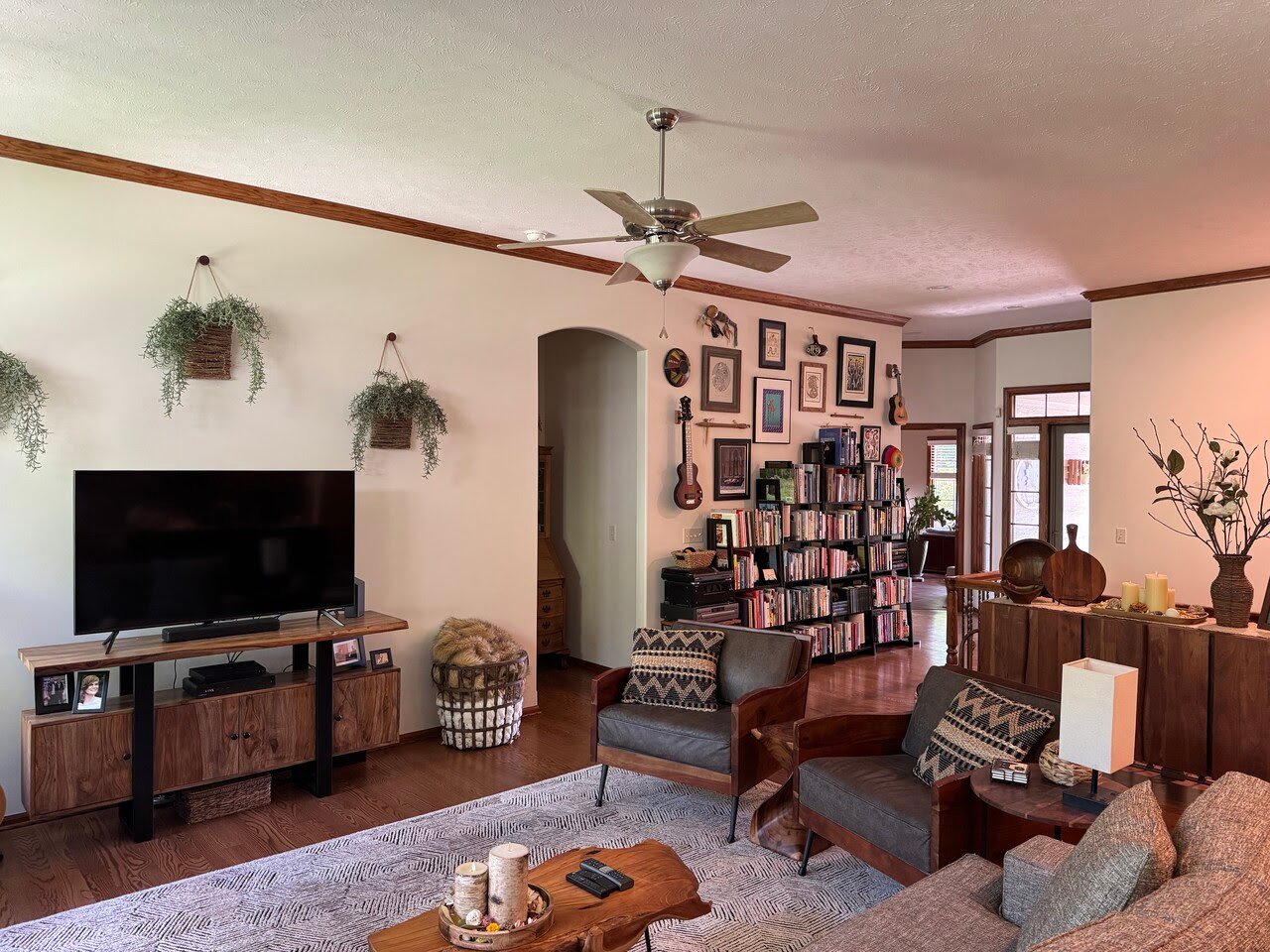When to Call a Painter for Touch-Ups vs. Doing It Yourself
July 14th, 2025
5 min read

You’ve just noticed it, a small chip on the baseboard, a scuff on the living room wall, or maybe a corner of your ceiling where the paint is starting to fade. It’s frustrating. Maybe it’s only been a year or two since your interior was painted, and now you’re wondering: Should I touch this up myself or call the painter back? You don’t want to make it worse, but you also don’t want to ignore it until it turns into a bigger problem.
At Brush & Roll Painting, we’ve been helping Omaha homeowners with their interior painting needs since 1996. We specialize in high-quality paint finishes and detailed prep work that lasts. Our team has seen all kinds of touch-up situations. And with our 5-year interior painting warranty, we often help clients understand what’s covered and what can be done quickly and professionally.
In this article, you’ll learn exactly when a small mark or paint issue is safe to handle on your own, and when it’s smarter to bring in a professional. You’ll walk away with clear examples, practical tips, and a better understanding of how touch-ups work for different interior surfaces like trim, walls, ceilings, and doors. We’ll also explain how painting warranties come into play, so you know what to expect if your project was done recently.
Why Paint Touch-Ups Are Trickier Than They Seem
It’s tempting to think a touch-up is just a dab of paint and you’re done. But matching color, finish, and texture takes more than just grabbing a brush.
Paint can fade, even slightly, over time. And even if you still have the original paint, it may not match the wall exactly anymore, especially with colors that shift under light. The way the paint was applied the first time (brush, roller, or sprayer) also plays a big role in how a touch-up will blend.
When you DIY a touch-up and it doesn’t match, it often stands out more than the original problem did. That’s why understanding the type of surface and paint used is so important.

DIY-Friendly Touch-Up Scenarios
There are some cases where a DIY touch-up might make sense, especially if you’re handy, patient, and okay with a result that might not be 100% invisible. Here are the situations where trying it yourself is usually okay:
Small scuffs on low-sheen wall paint
Flat or matte finishes tend to be more forgiving. If you bump a hallway wall with a laundry basket or notice a spot where the kids' backpacks rubbed the wall, you might be able to dab a little of the original paint on the area with a sponge or mini roller.
Chips on trim or baseboards
If it’s a small nick and you still have the original paint, you can lightly sand the area and touch it up with a small brush.
Nail holes from hanging artwork
If you rearranged your wall art or took down holiday decorations, filling small nail holes and spot-painting over them is often manageable with basic supplies and a steady hand.
In any of these cases, here are some tips:
- Clean the area before painting
- Use the same type of applicator (brush or roller)
- Stir the paint well, don’t just shake the can
- Feather the edges instead of trying to “patch” a square
Click the video above to watch a video comparison of whether or not you should repaint or just do touch-ups.
When to Call a Professional Instead
Here’s where it gets a little riskier. Some types of touch-ups are hard to do well without the original tools, training, or product. In these cases, you’ll save time and avoid frustration by calling a pro:
Gloss or semi-gloss walls
Higher sheen paints don’t touch up well. If you try to fix a scuff on a gloss or eggshell wall, it often leaves a shiny or dull spot that stands out in natural light. Professionals can usually blend these in more seamlessly, or repaint the entire panel or wall for a flawless finish.
Ceilings
Ceiling paint is often flat, but it still shows roller marks easily. Plus, working overhead makes everything harder. If you’ve had water damage or a stain, it’s better to have someone spot-prime and repaint it professionally.

Large damaged areas
If the wall or trim has gouges, peeling paint, or cracks, a touch-up won’t be enough. These areas usually need repair, sanding, and possibly priming before paint can go on.
Color matching is off
If you no longer have the original paint, or it’s been more than a couple of years, the color might be hard to replicate. Professional painters can often get a better match using color-matching tools and experience with blending techniques.
Doors and woodwork
Touching up doors or decorative trim can be very difficult without it looking patchy. These surfaces are often coated with higher-performance paints, like 2K poly, and require special prep. Repainting the entire piece or panel might be the better choice.
What About Your Warranty for Painting?
If you recently hired a professional painter for your interior work, your first step might not be a paintbrush, it might be checking your warranty.
At Brush & Roll Painting, we offer a 5-year warranty for interior painting. That means if something is peeling, cracking, or bubbling and it’s due to a workmanship issue, we’ll take care of it at no cost to you.
Here’s what’s typically covered under a paint warranty:
- Peeling or flaking caused by improper prep
- Cracking or chipping due to adhesion failure
- Bubbling due to moisture issues that should have been addressed during prep
Here’s what usually isn’t covered:
- Damage from furniture, pets, or people
- Water stains from leaks
- Normal wear and tear or fading from sunlight
- Nail holes from wall decor
Still, every painter is different, so always review the warranty terms you were given. If you're unsure, it's worth a quick phone call or email to ask.

How Much Do Touch-Ups Cost?
If you're thinking about calling a painter for a touch-up, the cost will depend on a few things, mainly the size of the area, the type of surface, and whether you still have the original paint. Most painters won’t price a touch-up like a full project. Instead, they usually charge by the hour for small jobs like these.
At Brush & Roll Painting, we charge $70 per hour for touch-up work, plus the cost of any materials we need. If you still have the original paint and it’s in good shape, that helps keep the cost down. If we need to get new paint or color match something, the price might be a little higher, depending on what’s required.
Here’s a general idea of what you might expect:
- A few wall scuffs or trim dings might take 1–2 hours
- Touching up a small section of the ceiling or repainting a door panel might take 2–4 hours
- If the color is hard to match or the finish is glossy, extra time might be needed for blending or prep
Some painters have minimum charges, even for small jobs. It's always a good idea to ask upfront how they handle touch-ups, especially if you’re comparing quotes. And if your paint job is still under warranty, like our 5-year interior warranty, it might be covered, which means you may not have to pay anything at all for the repair.
Touch-ups can seem small, but when done right, they keep your home looking sharp without needing a full repaint. When done poorly, though, they can be more noticeable than the original problem, and more expensive to fix later. That’s why, even for little things, it’s worth having a clear idea of the cost and process before jumping in.
Preventing Touch-Up Needs in the First Place
While you can’t avoid all wall dings and trim chips, a few good habits can reduce how often you need to fix things:
- Avoid dragging furniture against walls and baseboards
- Keep kids’ backpacks, sports gear, and shoes in designated spots
- Use bumpers or pads behind doors to prevent handle marks
- Keep leftover paint labeled with room and date so it’s easy to find for future use
And if you’re planning a big rearrangement, like moving couches or swapping beds, use painter’s tape to cover corners and watch for scuffs during the move.
Interior Painting in Omaha, NE
A few paint scuffs or nail holes don’t always mean you need to book a full paint job. But doing the wrong fix can make it worse, especially on walls with higher sheens, detailed trim, or ceilings. If you're unsure, don't guess. This article has given you a guide for what you can likely handle on your own and what’s better left to a pro.
If your project was done by Brush & Roll Painting, check your warranty before you grab a brush. We’re happy to talk through your issue and help you figure out the best path forward.
Whether you're dealing with multiple small chips or something that needs more attention, we’re here to help you keep your home looking its best.
Click the button below to get a quote.
If you are not ready to get a quote, check out our Interior Painting Pricing Calculator to see what a repaint or touch-up might cost in your home.
Kaylea is the Brush & Roll Painting Content Manager. Kaylea is a Journalism and Media Communications summa cum laude graduate with a minor in Marketing from the University of Nebraska at Omaha. Kaylea manages the marketing for Brush & Roll Painting.
















-Jul-23-2025-02-21-33-5468-PM.png?width=800&height=418&name=Blog%20Post%20Image%20Size%20(2)-Jul-23-2025-02-21-33-5468-PM.png)




-Oct-22-2025-01-39-19-5208-PM.png?width=800&height=418&name=Blog%20Post%20Image%20Size%20(1)-Oct-22-2025-01-39-19-5208-PM.png)





